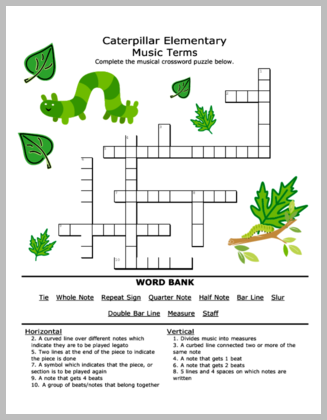 There seems to be a common misconception that the best way to teach students how to read notes on the bass and treble staves is through the use of jingles. I’m sure you’re familiar with (and/or have used) some of these widely known jingles, or the myriad of other variations which exist:
There seems to be a common misconception that the best way to teach students how to read notes on the bass and treble staves is through the use of jingles. I’m sure you’re familiar with (and/or have used) some of these widely known jingles, or the myriad of other variations which exist:
- Every Good Boy Does Fine (or Deserves Fudge)
- All Cars Eat Gas (or Cows Eat Grass)
- Great Big Dogs Fight Animals (or Good Boys Deserve Fudge Always)
- F A C E
This is the funniest one I’ve seen so far:

Good Burritos Don’t Fall Apart — I have to laugh a bit with that one. 
As funny as these can be I’m going to try to sway you away from the “dark side” of using jingles. 
Now, before I go too far let me say that I was taught to read music through the use of jingles. Using jingles can teach a student to read note names. But, through my teaching experience and my university education I have learned that there is a much faster, easier, and more understandable way to teach, and for students to learn, how to read note names. Better results can be had when applying the use of landmarks and intervals than when using jingles!
Let’s first examine what typically happens when notes are taught through using jingles:
- The teacher will teach the jingle and point to the lines/spaces for which the jingle applies.
- The student will then memorize the jingle in conjunction with the lines/spaces for which the jingle belongs.
- When students are asked to identify a note name they often will shout out “Cows” instead of “C.” Or, “Fudge” instead of “F.” And, many times students will count up to the requested line/space by saying, “every… good… boy…” before yelling out “DESERVES! Oh, hahaha. I mean D.”
- Going forward the teacher will need to emphasize that the note name is really “C” or “F” or whatever and remind, remind, remind the student to call the lines/spaces by the correct name. For, in most instances it will take quite a bit of time before the student FIRST thinks of, and says, the letter name instead of the jingle.
- Ultimately… in time… the student/teacher will have stamped out the need for jingles and the student will eventually just recognize the lines/spaces for their letter names.
Unfortunately, by this time a lot of (essentially wasted) time will have transpired. And as you can see, with the use of jingles a student must first learn the jingle before really learning the note names. This makes for an unnecessary extra step, and by using jingles the teacher creates a tie between the line/space and a word. Yet, in reality the lines/spaces are used to indicate note names through the use of letters. In other words, the note is not (and never will be) “cows.” Rather, the note is “C.”
A typical student will eventually learn note names even when taught with jingles. However, keep in mind that it may take him longer to learn, he may associate the line with a name instead of a note, and he may possibly struggle (long term) with sight reading (due to slower recall of note names) — which is a VERY important skill to have as a pianist. Teaching notes through the use of jingles is a method, but it’s not the best method.
So, if you’re ready to learn how to teach note names through a better method — using landmarks and intervals — then stay tuned! Our next blog post, entitled “Teaching Note Names (Part 2 – using landmarks and intervals)” will be coming soon!
